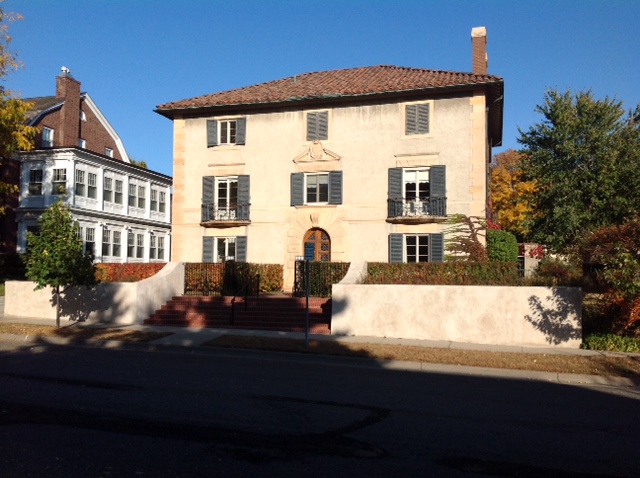
Details
Individual Landmark: Interior and Exterior
Address: 1711 Emerson Avenue South
Neighborhood: Lowry Hill
Construction Date: 1925
Contractor: N. Jenson
Architect: Frederick Lee Ackerman
Architectural Style: Italian Renaissance Revival
Historic Use:
Current Use: Private Residence
Date of Local Designation: 2010
Date of National Register Designation: 2012
Area(s) of Significance: Architecture
Period of Significance: 1924-1947
Historic profile
The Quinlan residence exemplifies the accomplishments of one of Minneapolis’ most entrepreneurial and prosperous business women of the early 20th Century. The residence, which is designed in an Italian Renaissance Revival style, also commemorates the work of master architect, Frederick Lee Ackerman, interior designer, Mary Linton Bookwalter Ackerman, and master craftsman, Samuel Yellin, who completed artistic wrought iron details.
In 2007, Elizabeth C. Quinlan was named by the Minnesota Historical Society as one of the 150 People, Places, and Things that Shaped Our State. Miss Quinlan was the co-founder of the Young-Quinlan Company, the first women’s ready-to-wear shop west of the Mississippi River. The ready-to-wear business model dramatically changed retail, and consequently, women’s positions in business and society. Before this, women either made their dresses themselves or paid someone to make them.
The daughter of working-class pioneers who settled on the banks of the Mississippi in Minneapolis, Quinlan helped support her family by going to work at the age of 16. She began her 51-year career in the clothing industry at Goodfellow’s Dry Goods Store and founded Young-Quinlan Department Store with fellow Goodfellow’s employee Fred V. Young.
Completed in 1924, the residence is symbolic of Quinlan’s success and representative of her taste for elegance and high fashion. It is a unique and refined interpretation of the late 16th Century Tuscan architecture adapted to an American urban setting. It cost $47,000 to build this house. The home served as the prototype for Ackerman’s later design of the five-story Young-Quinlan department store at 901 Nicollet Avenue.
Photo credits
1924, Photograph Collection, courtesy of the Minnesota Historical Society
2012, CPED Staff

